The Effects of Fuels and Lubricants on Low-Speed Pre-Ignition in Gasoline SI Engines
2012-09-28EricLIU
Eric LIU
(Southwest Research Institute)
The Effects of Fuels and Lubricants on Low-Speed Pre-Ignition in Gasoline SI Engines
Eric LIU
(Southwest Research Institute)
Abstract:With the onset of downsized and highly-boosted engines,engine designers are encountering a new combustion phenomenon,called low-speed pre-ignition(LSPI)or superknock,which occurs when the engine operates under a low-speed,high-load conditions.LSPI events cause large spikes in cylinder pressure that can easily exceed the design limits of the engine.Therefore,it is important for the automotive industry to understand how LSPI events occur and develop a solution that can either eliminate it or detect and mitigate its effects.
This paper summarizes the existing work that has been conducted on the subject of LSPI.Much of the research work presented hypothesizes that physical and chemical interactions and accumulation of fuels and lubricants in the piston top land crevice volume affect the frequency of LPSI events.Therefore,it may be possible to formulate fuels and lubricants that can mitigate or eliminate the occurrence of LPSI.
Key words:low speed preignition;superknock;lubricant-fuel interaction;EGR
0 Introduction
With the onset of rising fuel prices and decreasing fuel availability,original engine manufacturers(OEMs) are hard-pressed to improve the fuel economy of their product lines.As a result,many OEMs have turned to gasoline direct injection(GDI)engines for their fuel economy benefit.In addition to adopting GDI technology, OEMs are also downsizing engines to reduce pumping losses and incorporate turbochargers to increase power output and maintain driveability of the vehicle.By incorporating these changes into the engine design,the engine is allowed to operate at a much wider range of operational conditions(see Figure 1).

Figure 1 Comparison of brake-specific fuel consumption(BSFC)between a 1.8L port-fuel injected(PFI) naturally aspirated(NA)engine and a 1.4L spark-ignition direct-injection(SIDI)turbocharged engine[1]
The red dots in Figure 1 represent points of common engine speed and torque;the numbers next to the red dots represent the BSFC at that particular operating condition.It should be noted that BSFC of the SIDI turbocharged engine is generally less than that of the PFI NA engine.It should also be noted that the area underneath the torque curve of the SIDI engine is much larger than that of the PFI engine,allowing for more optionsfor engine operating conditions.
However,one of the operating regions that are made available causes the engine to undergo an event known as low-speed pre-ignition(LSPI)(see Figure 2).
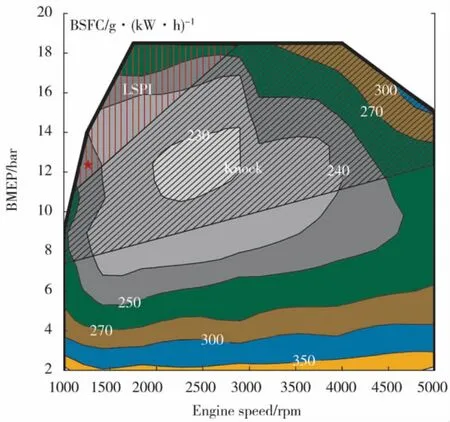
Figure 2 Typical operating regions where LSPI and knock occurs in a SIDI engine
LSPI is characterized as a pre-ignition event that generally occurs while the engine is operating in a lowspeed high-load condition(i.e.towing a trailer uphill from a stopped position).When it occurs,a loud and sharp pinging noise can be heard from the engine.In addition to being alarmingly loud,it is also capable of causing catastrophic engine failure.
LSPI is often mistaken for typical engine knock,due to its characteristic pinging noise.However,there are physical characteristics of the event that distinguishes it from knock.A cylinder pressure trace over crankshaft angle is shown in Figure 3,below.
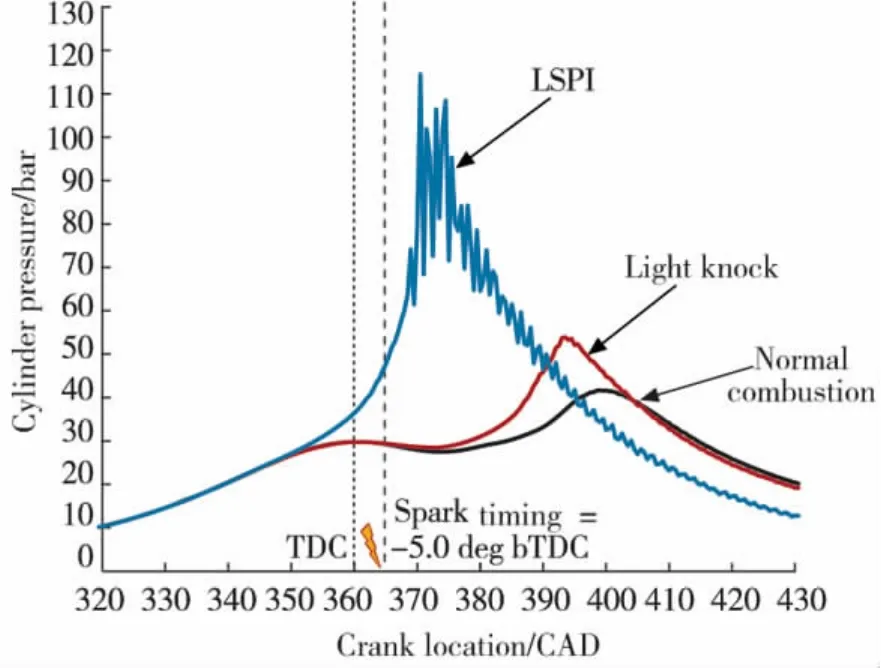
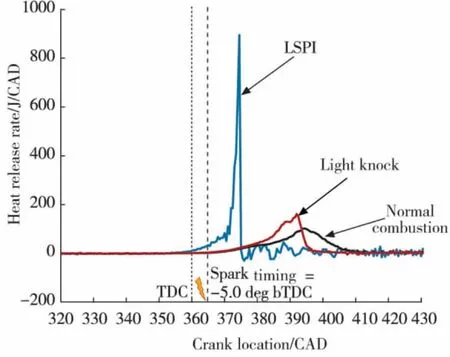
Figure 3 Comparisons of in-cylinder pressure and heat release rate during combustion between LSPI,knocking,and normal combustion events
While operating at low-speed high-load conditions,the engine electronic control module(ECM) typically retards spark timing to prevent engine knock.This results in the“double hump”shape in the cylinder pressure for a normal combustion event.It should be noted that the cylinder pressure and the heat release rate does not increase until after the spark event,indicating that the spark event initiates combustion.In a knock event,the“double hump”shape of the in-cylinder pressure is still present;the peak in-cylinder pressure is higher than that of the normal combustion event due to auto-ignition of the end gases during knock.However in a LSPI event,the incylinder pressure and the heat release rate increase well before the spark event,indicating that the incylinder charge has auto-ignited.This results in a very rapid increase in in-cylinder pressure and heat release rate.After the combustion event takes place,a pressure wave continues to propagate inside the cylinder as the piston moves away from the topdead-center(TDC)position.The peak cylinder pressure during a LSPI event is many times greater than that of a knock event or that of a normal combustion event and can easily exceed the maximum allowable cylinder pressure limits.Unfortunately,unlike knock,LSPI events cannot be mitigated or eliminated by retarding the spark timing.
LPSI events are also sporadic and seemingly random in nature.Figure 4 shows consecutive occurrences of LSPI events during a fired-engine test.

Figure 4 Consecutive occurrences of LSPI events during a fired-engine test
LSPI events are indicated by the increase in peak cylinder pressure.It is apparent that the LSPI events that occurred during this test run did not occur periodically.They also can occur in any cylinder of the engine and do not repeat in any particular pattern.Groups of LSPI events from a particular cylinder do not contain similar amounts of LSPI events as other occurrences in other cylinders.LSPI events also seem to occur in a sequence that alternates between LSPI events and normal combustion events(see Figure 5).
LSPI is a topic that has caught a lot of attention within the automotive industry.To protect their engines,many OEMs have programmed ECMs to avoid the LSPI operating region completely.Unfortunately by doing so,they also eliminate an operating region where additional fuel economy gains can be obtained.OEMs view the LSPI problem as a major obstacle on the road to improving fuel economy performance.Therefore,it is important to investigate the cause of and possible solutions to the LSPI problem.
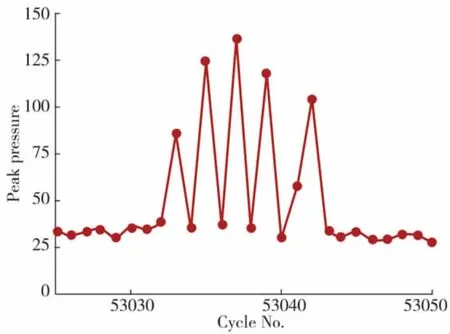
Figure 5 Normal combustion events generally occur between consecutive LSPI events
This paper seeks to summarize existing research throughout the automotive industry that has been conducted on the topic of LSPI and present a problem statement regarding the effects of lubricating oils,fuel and interactions between them on LSPI.Although lubricating oils have been traditionally regarded as a non-factor in combustion events,evidence from the research conducted suggests otherwise.Dahnz,et al.took a systematic approach to specify the cause of LSPI(see Figure 6)[2].

Figure 6 Possible causes for LSPI,lighter colors represent greater possibility[2]
Dahnz,et al.conducted experimental studies on the effects of various operating parameters on LSPI.His team also conducted simulations that considered the reaction kinetics of the in-cylinder air/fuel charge to determine its auto-ignition behavior.After considering the results of the experiments and simulations,Dahnz’s team concluded that the most likely cause of LSPI originates from the introduction of lubricating oil into the combustion chamber from the top ring land crevice between the piston and the cylinder liner(see Figure 7).
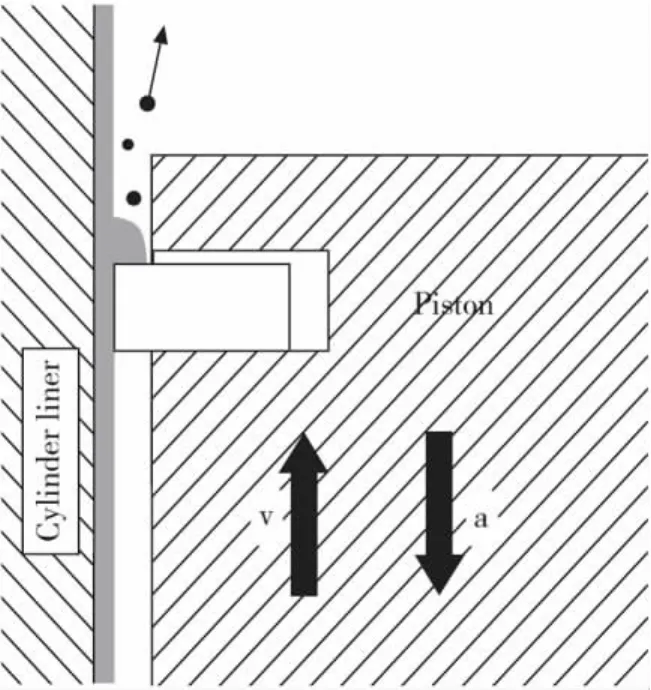
Figure 7 Droplets of lubricating oil entering the combustion chamber from the top ring land crevice[2]
Zaccardi,et al.further stated that a particular combination of engine hardware specific properties,engine operating conditions,lubricant chemical and physical properties,and fuel chemical and physical properties lends itself to allow for occurrences of LSPI events[3].
1 Current Knowledge Base on the LSPI Phenomenon
1.1 Fuel Effects on LSPI
Amann,et al.conducted experiments on a modern,boosted GDI engine to investigate the effects of different fuels on LSPI[4].In this study,four gasoline fuel blends are selected:a baseline fuel,which represents a typical gasoline fuel that can be purchased at the local pump,an E10 fuel,a fuel with high aromatic content,and a fuel with low aromatic content(see Figure 8).
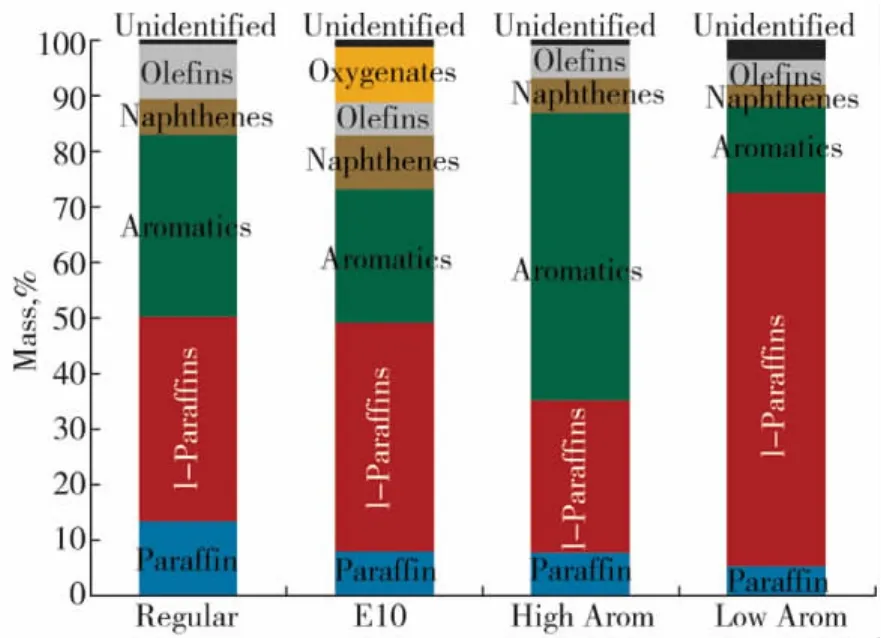
Figure 8 Composition of test fuels[4]
Each test fuel blend has very similar research and motor octane numbers(RON and MON).Each test fuel blend is run in the test engine at a baseline test condition,at a lean AFR condition,and at a 6%EGR with increased fuel flow rate condition.The baseline test conditions are shown in Table 1.The results are shown in Figure 9.
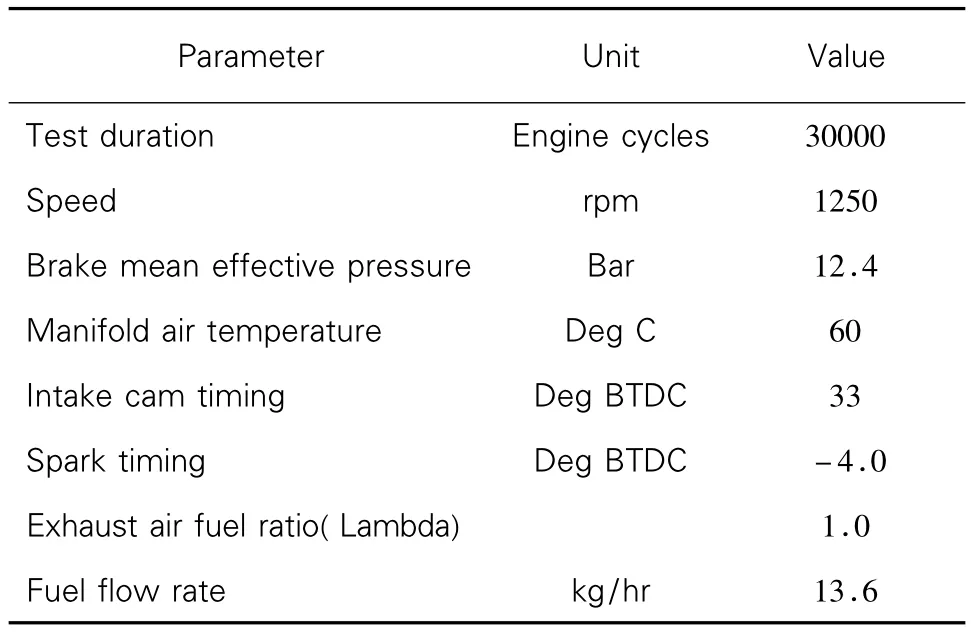
Table 1 Baseline test conditions
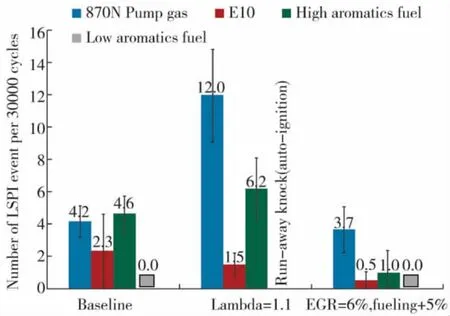
Figure 9 Comparison of results from running the four test fuels at the baseline,increased AFR(lean),and increased EGR and fuel flow rate conditions[4]
Surprisingly,the low aromatics fuel shows no occurrence of LSPI events in the baseline and 6%EGR with increased fueling rate test conditions.However,it has a tendency to cause knock.While operating in a slightly lean AFR condition,the low aromatics fuel causes a phenomenon known as run-away knock.Runaway knock is characterized by an initially low intensity knock that perpetuates to an increasingly high intensity knock with each successive cycle.Eventually,the engine is shut down due to severe knocking events and is unable to finish the test.Low temperature heat release prior to the initiation of complete combustion is observed in this situation.
Ultimately,this experiment shows that different types of fuel blends can have very strong effects on LSPI.
1.2 Effects of GDI and PFI on LSPI
Zaccardi,et al.used a single-cylinder research
engine to investigate the effects of GDI and PFI injection systems on LSPI[3].In his experiments,Zaccardi notes that the frequency of LSPI events is generally higher for the PFI injection system than the GDI injection system.He draws the hypothesis that the injection method dictates how the fuel and oil on the cylinder liner mixes.He also notes that the PFI injection system allows the lighter components of the fuel to evaporate in the intake port,which has a greater tendency to cause knock.On the other hand,the GDI injection system introduces all of the fuel components simultaneously into the combustion chamber.
1.3 Effects of In-Cylinder Charge Motion on LSPI
Zaccardi,et al.also conducted experiments to investigate the effects of in-cylinder charge motion on LSPI events[3].A moderate tumble,high tumble,and swumble(swirl and tumble)are induced in the in-cylinder charge for each test condition.The occurrences of LSPI events were counted and recorded.LSPI events are identified by comparing the 10%mass fraction burned(MFB)crank angle of a particular cycle with the average 10%MFB crank angle.Outliers beyond an upper and lower limit of the 10%MFB crank angle are considered an LSPI event or a late ignition event.
The results of his experiment are shown in Figure 10.

Figure 10 Comparison of occurrences of LSPI events between the reference(moderate tumble),high tumble,and swumble in-cylinder charge motion configurations[3]
It is apparent that incorporating high tumble or swumble to the in-cylinder charge motion greatly decreases the frequency of LSPI events.Zaccardi,et al.concluded that the swumble configuration is the most efficient way to limit the occurrence of LSPI events.However,intensifying the charge motion does not affect the intensity of the LSPI event.
1.4 Effects of Fuel and Lubricant Interactions on LSPI
The discrepancy of the occurrence of LSPI events between GDI and PFI injection systems and the target of the targeting of the in-cylinder fuel jet suggest that LSPI may be dependent on the interaction between the fuel and lubricating oil on the cylinder liner.Brandt,et al.showed that the fuel film thickness on the cylinder liner varies with different injection systems,AFR,and in-cylinder charge motion(see Figure 11)[5].

Figure 11 Comparisons of various injection methods,AFR’s,and in-cylinder charge motion on fuel film thickness[5]
The film thickness measurements are made with optical probes located in 4 different positions within the combustion chamber.All four positions show a similar trend of fuel film thickness.It is ultimately concluded that GDI yields thicker fuel films on the cylinder line thanPFI.The fuel film thickness is also larger for rich AFR’s.In-cylinder charge motion decreases the fuel film thickness.
Brandt,et al.also conducted an experiment to see the effects of fuel dilution on oil evaporation.A vessel pressurized with nitrogen containing a mixture of engine oil and iso-octane is heated with a pulsed laser to 120.The vapor that the mixture emits is analyzed with a mass spectrometer to determine the amount of oil and fuel in the vapor.The results are shown in Figure 12.

Figure 12 Effect of fuel dilution on oil vaporization[5]
According to Brandt’s results,only a small amount of fuel(15%~20%)is required double the rate vaporization of the oil.
These findings suggest a possible reason that explains the prevalence of LSPI in PFI engines rather than GDI engines.The oil on the cylinder liner of a PFI engine does not evaporate in large enough amounts,so it is allowed to accumulate in the piston top land crevice.According to Dahnz,et al.,this is a possible cause of LSPI events.Because GDI engines are able to deposit more fuel on the cylinder liner,the oil on the cylinder liner may be evaporating at larger quantities than that of PFI engines.As the oil vaporizes,it homogenizes with the air-fuel charge,and ignites with it,preventing the LSPI event from occurring.However,this only decreases the rate of accumulation of oil in the piston top land crevice,so the frequency of LSPI events is effectively decreased,not eliminated.
1.5 EGR Effects on LSPI
Amann,et al.conducted experiments on a modern,boosted GDI engine to investigate the effects of exhaust gas recirculation(EGR)on LSPI[6].He varied fueling rates and EGR amounts in his experiments.Ultimately,he concluded that increasing fueling rates increases the intensity and the frequency of LSPI events.On the other hand,increasing EGR amounts can decrease the intensity and the frequency of LSPI events and sometimes even eliminate it(see Figure 13).
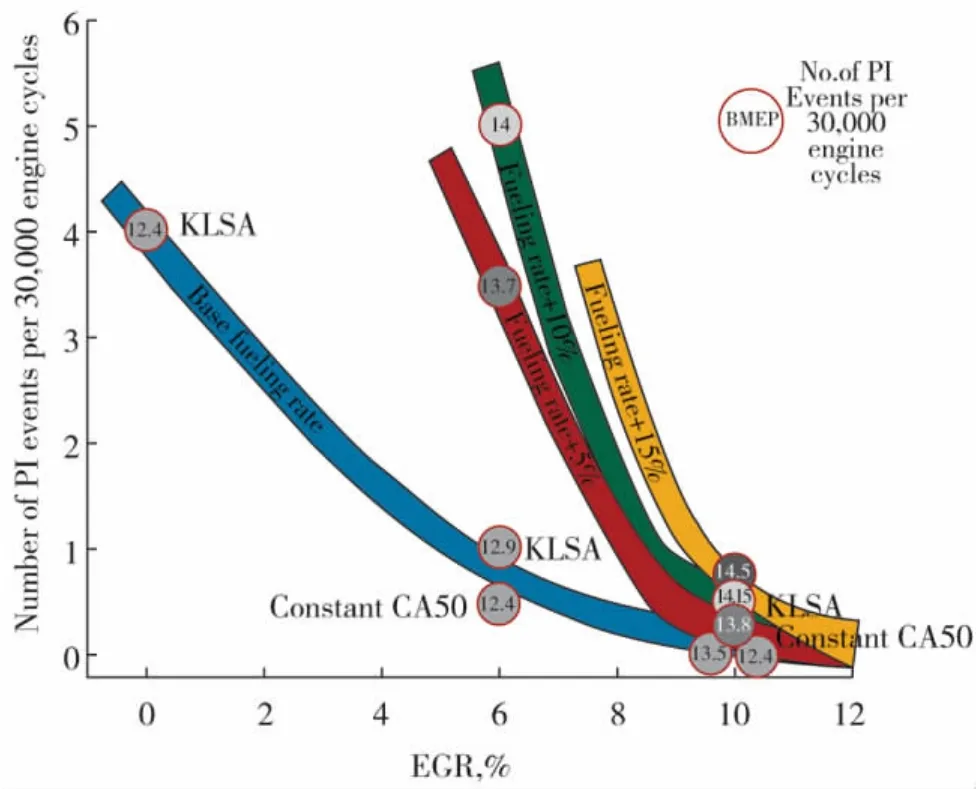
Figure 13 The effects of EGR amounts and fueling rates on LSPI[6]
After his test runs with increased EGR,he also ran a test with the baseline conditions to check for baseline repeatability(see Figure 14).
However,he noticed that the baseline test after the increased EGR test run resulted in significantly more occurrences of LSPI events than the original baseline test.He ran a second baseline test and noticed that the frequency of LSPI events returned to the amount yielded by the original baseline test.
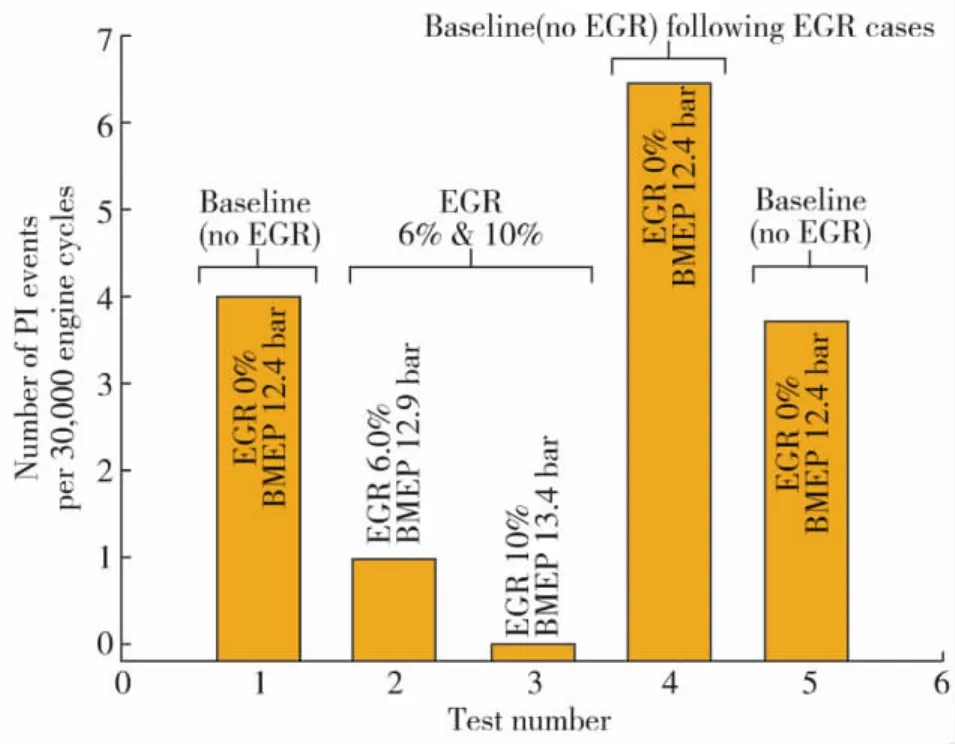
Figure 14 Increased LSPI occurrences after EGR is removed[6]
Thus,Amann,et al.concluded that EGR doesn’t completely solve the LSPI problem,and it only seems to mask the underlying problem that causes LSPI.He theorizes that LSPI is caused by an accumulation of substance(s)within the combustion chamber.When the amount of substance(s)reaches a critical amount,LSPI events occur until the amount of substance(s)is depleted.It continues to accumulate after the LSPI event until it reaches a critical amount again at the next LSPI event.EGR seems to change in the in-cylinder conditions such that the accumulated substance(s)cannot initiate LSPI events.However,it does not stop the accumulation of the substance(s).As a result,the amount of substance(s) accumulated is well beyond the critical amount at the start of the repeated baseline test,and the frequency of LSPI events increased after EGR is removed.
1.6 LSPI Effects on Emissions
Amann,et al.investigated the effects of LSPI on exhaust emissions[4].He noticed thathydrocarbon (HC)emission spikes that correlated with the occurrence of LSPI events(see Figure 15).

Figure 15 HC spikes correlate to the occurrence of LSPI events[4]
Upon further inspection of the HC emissions by FTIR,the HC components are identified as light hydrocarbons,such as methane,ethene,acetylene,etc…
Amann,et al.also measured the air-fuel ratio (AFR)after the occurrence of LSPI events.He noticed that the AFR spikes rich immediately following a LSPI event(see Figure 16).
Amann,et al.noticed that the AFR spikes are initially very rich,but they decreased in richness towards the last LSPI event.He also conducted a similar experiment where he forced the engine to knock by advancing the spark timing by 20 degrees(see Figure 17).
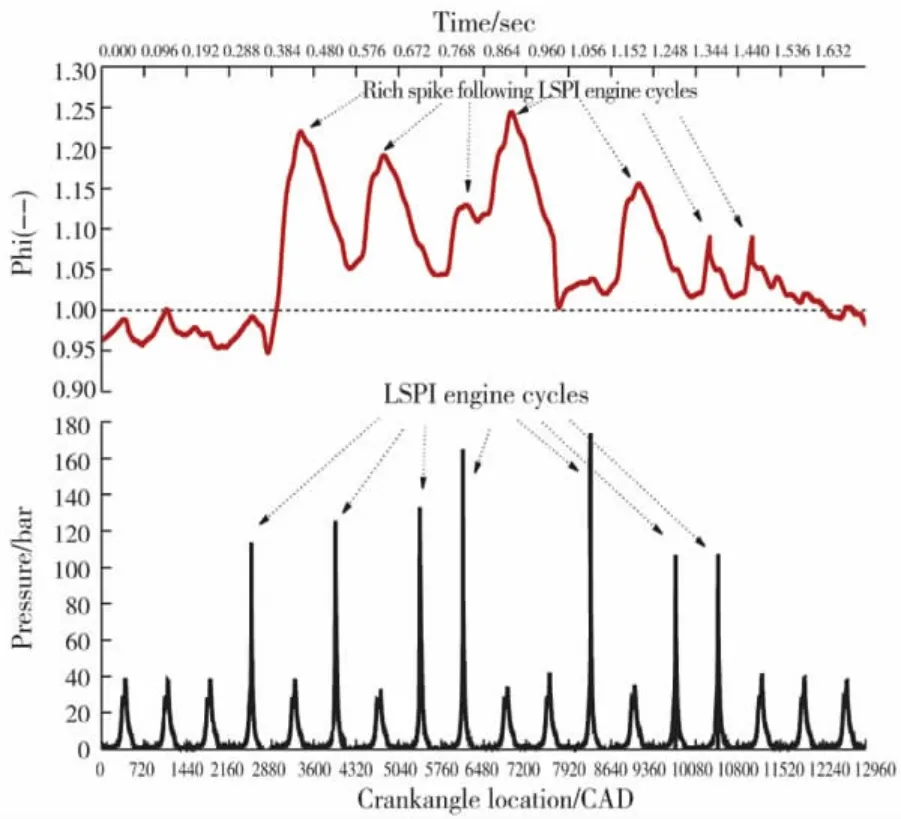
Figure 16 Rich spikes in AFR follow LSPI events[4]

Figure 17 AFR spikes caused by induced engine knock[4]
Amann,et al.noticed that the AFR spikes caused by the engine knock are not nearly as rich as the AFR spikes caused by the LSPI events.Also,he noticed that the richness of the spikes decreased over time until it reaches an equilibrium level.Subsequent triggering of engine knock also produces rich AFR spikes,but the level of richness is also significantly less than the previous instance where engine knock is induced.
Amann,et al.concludes that the discrepancy of the richness of the AFR spikes caused by LSPI events and knocking events indicate that exclusive of fuel and air,another HC,assumed to be engine oil,participates in the in-cylinder combustion event that eventually leads to the occurrence of an LSPI event.The decrease of richness in the AFR spikes over time indicates that the engine oil accumulated to a critical amount that triggers an LSPI event and is consumed over the course of the LSPI event.
2 Summary and Conclusions
LSPI is an industry-wide problem that stands as an obstaclebetween the industrymovementtowards downsized high-performance engines and improved fuel economy that comes with progressing along that path.It is an event that can lead to catastrophic engine failure if not controlled and mitigated or eliminated.From the research that has already been conducted on the topic of LSPI,it is clear that the problem of LSPI is not a trivial one that has just one cause.A set of operating conditions as well as operating history must be considered in determining the cause of LSPI.
It is also clear that the physical and chemical interactions between fuels and lubricants are part of the root cause of LSPI.As a result,fuels and lubricant formulations have received industry-wide attention as potential solutions to the LSPI problem.The evidence presented by the research discussed in this paper suggests that LSPI is caused by an accumulation of substances,possibly a fuel and lubricant mixture,on the piston top land crevice volume.The accumulation continues until it reaches a critical mass and triggers an LSPI event that continues until the accumulated matter is consumed.
This is just one of many hypotheses on the mechanism that drives LSPI.Future work considered in the investigation of LSPI events includes conducting tests on various lubricant base oils and formulations and various types of fuel blends.
[1]K nigstein A,Larrson P I,Grebe U D,et al.Differentiated Analysis of Downsizing Concepts[C]∥29thVienna Motor Symposium.Austria,2008.
[2]Dahnz C,Han K M,Spicer U,et al.Investigations on Pre-Ignition in Highly Supercharged SI Engines[C]// SAE Paper No.2010-01-0355,2010.
[3]Zaccardi J M,Laget O,Pagot A,et al.Investigations on the Effects of In-Cylinder Charge Motion and Injection Mode on Pre-Ignition in Highly Boosted Spark Ignition Engines[C]∥19thAachen Colloquium Automobile and Engine Technology.Germany,2010.
[4]Amann M,Alger T,Mehta D.Engine Operating Condition
and Gasoline Fuel Composition Effects on Low-Speed Pre-Ignition in High-Performance Spark Ignited Gasoline Engines[C]//SAE Paper No.2011-01-0342,2011.
[5]Brandt S,Knoll G,Schlerege F,et al.Influence of the Mixture Formation on the Lubrication Oil Emissions of Combustion Engines[C]∥19thAachen Colloquium Automobile and Engine Technology.Germany,2010.
[6]Amann M,Alger T,Mehta D.The Effect of EGR on Low-Speed Pre-Ignition in Boosted SI Engines[C]//SAE Paper No.2011-01-0339,2011.
TE626.32
A
2012-03-26。
Eric Liu,male,is a Research Engineer at Southwest Research Institute.He has received his Bachelor degree in Mechanical Engineering from the Cooper Union for the Advancement of Science and Art.At Southwest Research,Mr.Liu is the test engineer who runs the ASTM D6891 SequenceⅣA engine crankcase lubricant valve train wear test.He also conducts research projects related to valve train wear and antiwear lubricant additives.During 2010-2011,Mr.Liu was a member of the team at Southwest Research Institute investigating the potential causes of low-speed pre-ignition for the Pre-Ignition Prevention Program(P3)Consortium.Mr.Liu is currently pursuing a Masters of Mechanical Engineering degree at the University of Texas at San Antonio.
1002-3119(2012)05-0008-08
